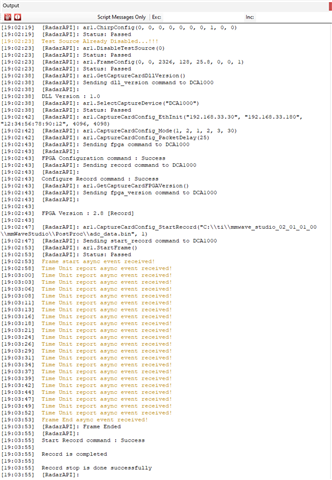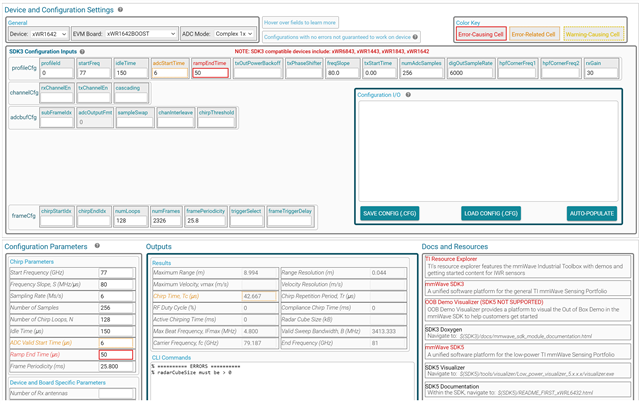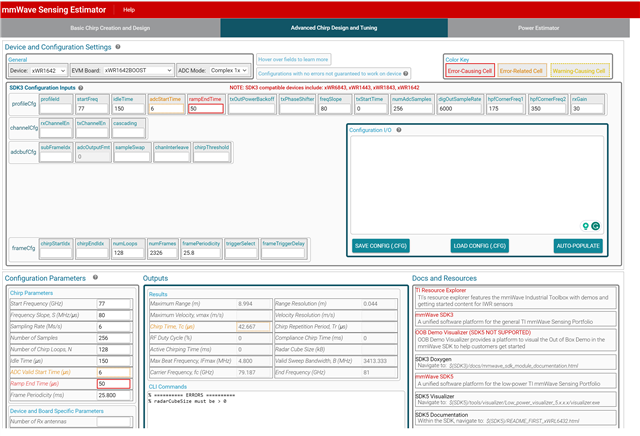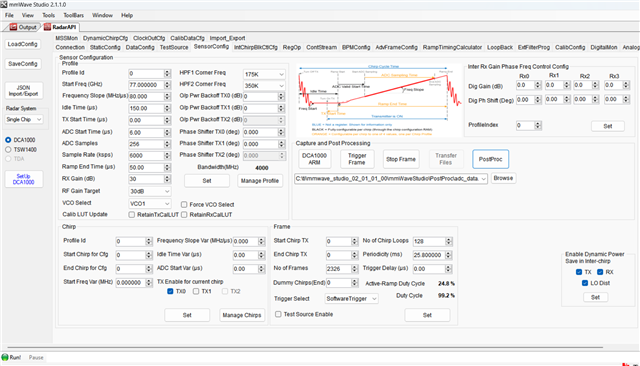Hello,
I was wondering if there's a standard formula for calculating the chirp time. I've gone through the document titled "Programming Chirp Parameters in TI Radar Devices," but I'm still unsure about how to calculate the chirp time. I have used the below parameters to set up the awr1642boost evm for data capture. Could you please provide some guidance on how to calculate the chirp time using the parameters below?
Number of frames (n_frame) = 2326
Chirps per frame (chirp_per_frame) = 128
Frame periodicity (frame_periodicity) = 25.8 milliseconds
Wait before copy (wait_before_copy) = 70000
Additional parameters:
Starting frequency (start_freq) = 77 GHz
Idle time (idle_time) = 150 microseconds
ADC start time (adc_start_time) = 6 microseconds
Ramp end time (ramp_end_time) = 50 microseconds
Frequency slope (freq_slope) = 80
ADC samples (adc_samples) = 256
ADC sample rate (adc_sample_rate) = 6000
RX gain (RX_gain) = 30
Thank you,
Deepu





